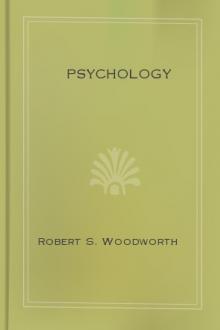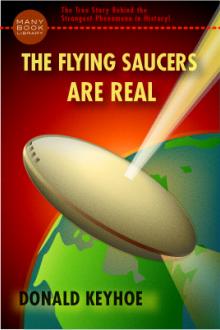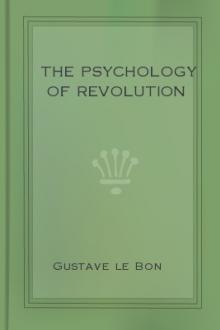The Psychology of Beauty by Ethel D. Puffer (good non fiction books to read TXT) 📕

- Author: Ethel D. Puffer
- Performer: -
Book online «The Psychology of Beauty by Ethel D. Puffer (good non fiction books to read TXT) 📕». Author Ethel D. Puffer
it is self-destructive. For, not being able to reject, appreciation cannot, in logic, choose the objects of its attention. But a method which cannot limit on its own principles the field within which it is to work is condemned from the beginning; it bears a fallacy at its core. In order to make criticism theoretically possible at all, the power to choose and reject, and so the pronouncing of judgment, must be an integral part of it.
To such a task the critic may lend himself without arousing our antagonism. We have no pressing need to know the latent possibilities of emotion for us in a book or a poem; but whether it is excellent or the reverse, whether “we were right in being moved by it,” we are indeed willing to hear, for we desire to justify the faith that is in us.
If, then, the office of the judge be an essential part of the critical function, the appreciative critic, whatever his other merits,—and we shall examine them later,—fails at least of perfection. His scheme is not the ideal one; and we may turn back, in our search for it, to a closer view of those which his was to supersede. Impressionism, however, is at once out of the running; it has always vigorously repudiated the notion of the standard, and we know, therefore, that no more than appreciation can it choose its material and stand alone. But scientific criticism professes, at least, the true faith M.
Brunetiere holds that his own method is the only one by which an impersonal and stable judgment can be rendered.
The doctrine of the evolution of literary species is more or less explained in naming it. Literary species, M. Brunetiere maintains, do exist. They develop and are transformed into others in a way more or less analogous to the evolution of natural types. It remains to see on what basis an objective judgment can be given. Although M. Brunetiere seems to make classification the disposal of a work in the hierarchy of species, and judgment the disposal of it in relation to others of its own species, he has never sharply distinguished between them; so that we shall not be wrong in taking his three principles of classification, scientific, moral, and aesthetic, as three principles by which he estimates the excellence of a work. His own examples, indeed, prove that to him a thing is already judged in being classified. The work of art is judged, then, by its relation to the type. Is this position tenable?
I hold that, on the contrary, it precludes the possibility of a critical judgment; for the judgment of anything always means judgment with reference to the end for which is exists. A bad king is not the less a bad king for being a good father; and if his kingship is his essential function, he must be judged with reference to that alone. Now a piece of literature is, with reference to its end, first of all a work of art. It represents life and it enjoins morality, but it is only as a work of art that it attains consideration; that, in the words of M. Lemaitre, it “exists” for us at all. Its aim is beauty, and beauty is its excuse for being.
The type belongs to natural history. The one principle at the basis of scientific criticism is, as we have seen, the conception of literary history as a process, and of the work of art as a product. The work of art is, then, a moment in a necessary succession, governed by laws of change and adaptation like those of natural evolution. But how can the conception of values enter here? Excellence can be attributed only to that which attains an ideal end; and a necessary succession has no end in itself. The “type,” in this sense, is perfectly hollow.
To say that the modern chrysanthemum is better than that of our forbears because it is more chrysanthemum-like is true only if we make the latter form the arbitrary standard of the chrysanthemum. If the horse of the Eocene age is inferior to the horse of to-day, it is because, on M. Brunetiere’s principle, he is less horse-like. But who shall decide which is more like a horse, the original or the latter development? No species which is constituted by its own history can be said to have an end in itself, and can, therefore, have an excellence to which it shall attain. In short, good and bad can be applied to the moments in a necessary evolution only by imputing a fictitious superiority to the last term; and so one type cannot logically be preferred to another. As for the individual specimens, since the conception of the type does not admit the principle of excellence, conformity thereto means nothing.
The work of art, on the other hand, as a thing of beauty, is an attainment of an ideal, not a product, and, from this point of view, is related not at all to the other terms of a succession, its causes and its effects, but only to the abstract principles of that beauty at which it aims. Strangely enough, the whole principle of this contention has been admitted by M. Brunetiere in a casual sentence, of which he does not appear to recognize the full significance. “We acknowledge, of course,” he says, “that there is in criticism a certain difference from natural history, since we cannot eliminate the subjective element if the capacity works of art have of producing impressions on us makes a part of their definition. It is not in order to be eaten that the tree produces its fruit.” But this is giving away his whole position! As little as the conformity of the fruit to its species has to do with our pleasure in eating it, just so little has the conformity of a literary work to its genre to do with the quality by virtue of which it is defined as art.
The Greek temple is a product of Greek religion applied to geographical conditions. To comprehend it as a type, we must know that it was an adaptation of the open hilltop to the purpose of the worship of images of the gods. But the most penetrating study of the slow moulding of this type will never reveal how and why just those proportions were chosen which make the joy and the despair of all beholders. Early Italian art was purely ecclesiastical in its origin. The exigencies of adaptation to altars, convent walls, or cathedral domes explain the choice of subjects, the composition, even perhaps the color schemes (as of frescoes, for instance); and yet all that makes a Giotto greater than a Pictor Ignotus is quite unaccounted for by these considerations.
The quality of beauty is not evolved. All that comes under the category of material and practical purpose, of idea or of moral attitude, belongs to the succession, the evolution, the type But the defining characters of the work of art are independent of time. The temple, the fresco, and the symphony, in the moment they become objects of the critical judgment, become also qualities of beauty and transparent examples of its laws.
If the true critical judgment, then, belongs to an order of ideas of which natural science can take no cognizance, the self-styled scientific criticism must show the strange paradox of ignoring the very qualities by virtue of which a given work has any value, or can come at all to be the object of aesthetic judgment. In two words, the world of beauty and the world of natural processes are incommensurable, and scientific criticism of literary art is a logical impossibility.
But the citadel of scientific criticism has yet one more stronghold. Granted that beauty, as an abstract quality, is timeless; granted that, in the judgment of a piece of literary art, the standard of value is the canon of beauty, not the type; yet the old order changeth. Primitive and civilized man, the Hottentot and the Laplander, the Oriental and the Slav, have desired differing beauties. May it, then, still be said that although a given embodiment of beauty is to be judged with reference to the idea of beauty alone, yet the concrete ideal of beauty must wear the manacles of space and time,—
that the metamorphoses of taste preclude the notion of an objective beauty? And if this is true, are we not thrown back again on questions of genesis and development, and a study of the evolution, not of particular types of art, but of general aesthetic feeling; and, in consequence, upon a form of criticism which is scientific in the sense of being based on succession, and not on absolute value?
It is indeed true that the very possibility of a criticism which shall judge of aesthetic excellence must stand or fall with this other question of a beauty in itself, as an objective foundation for criticism. If there is an absolute beauty, it must be possible to work out a system of principles which shall embody its laws,—an aesthetic, in other words; and on the basis of that aesthetic to deliver a well-founded critical judgment.
Is there, then, a beauty in itself? And if so, in what does it consist?
We can approach such an aesthetic canon in two ways: from the standpoint of philosophy, which develops the idea of beauty as a factor in the system of our absolute values, side by side with the ideas of truth and of morality, or from the standpoint of empirical science. For our present purpose, we may confine ourselves to the empirical facts of psychology and physiology.
When I feel the rhythm of poetry, or of perfect prose, which is, of course, in its own way, no less rhythmical, every sensation of sound sends through me a diffusive wave of nervous energy. I am the rhythm because I imitate it in myself. I march to noble music in all my veins, even though I may be sitting decorously by my own hearthstone; and when I sweep with my eyes the outlines of a great picture, the curve of a Greek vase, the arches of a cathedral, every line is lived over again in my own frame. And when rhythm and melody and forms and colors give me pleasure, it is because the imitating impulses and movements that have arisen in me are such as suit, help, heighten my physical organization in general and in particular.
It may seem somewhat trivial to say that a curved line is pleasing because the eye is so hung as to move best in it; but we may take it as one instance of the numberless conditions for healthy action which a beautiful form fulfills. A well-composed picture calls up in the spectator just such a balanced relation of impulses of attention and incipient movements as suits an organism which is also balanced—bilateral—in its own impulses to movement, and at the same time stable; and it is the correspondence of the suggested impulses with the natural movement that makes the composition good. Besides the pleasure from the tone relations,—which doubtless can be eventually reduced to something of the same kind,—it is the balance of nervous and muscular tensions and relaxations, of yearnings and satisfactions, which are the subjective side of the beauty of a strain of music. The basis, in short, of any aesthetic experience—poetry, music, painting, and the rest—
is beautiful through its harmony with the conditions offered by our senses, primarily of sight and hearing, and through the harmony of the suggestions and impulses it arouses with the whole





Comments (0)